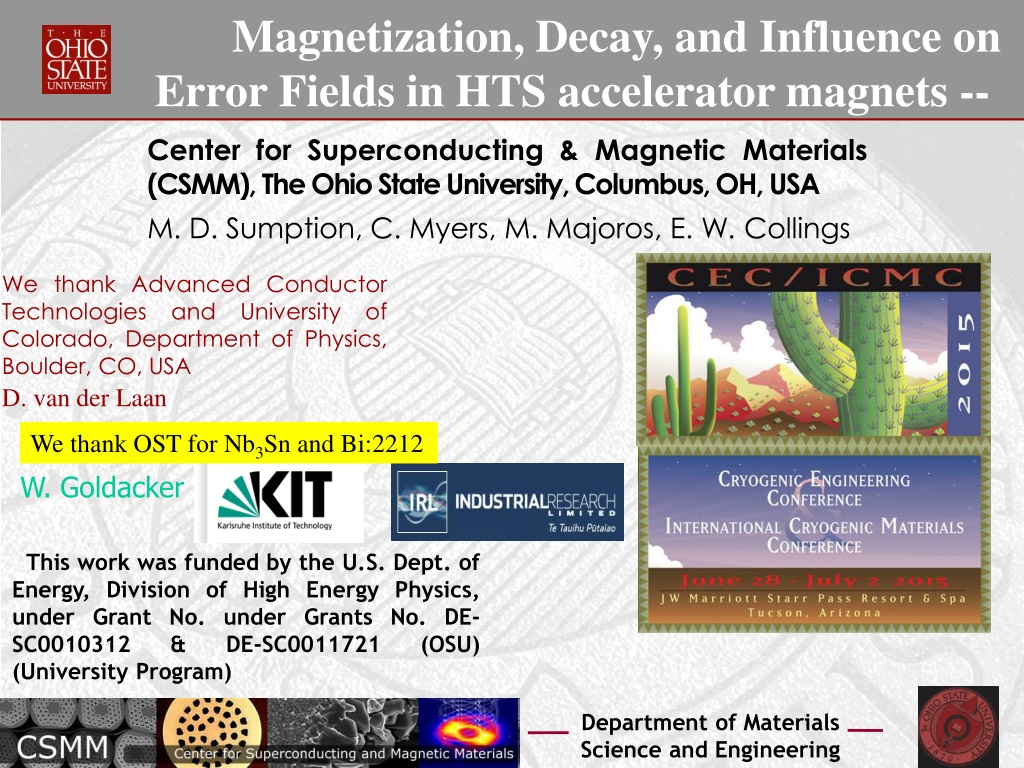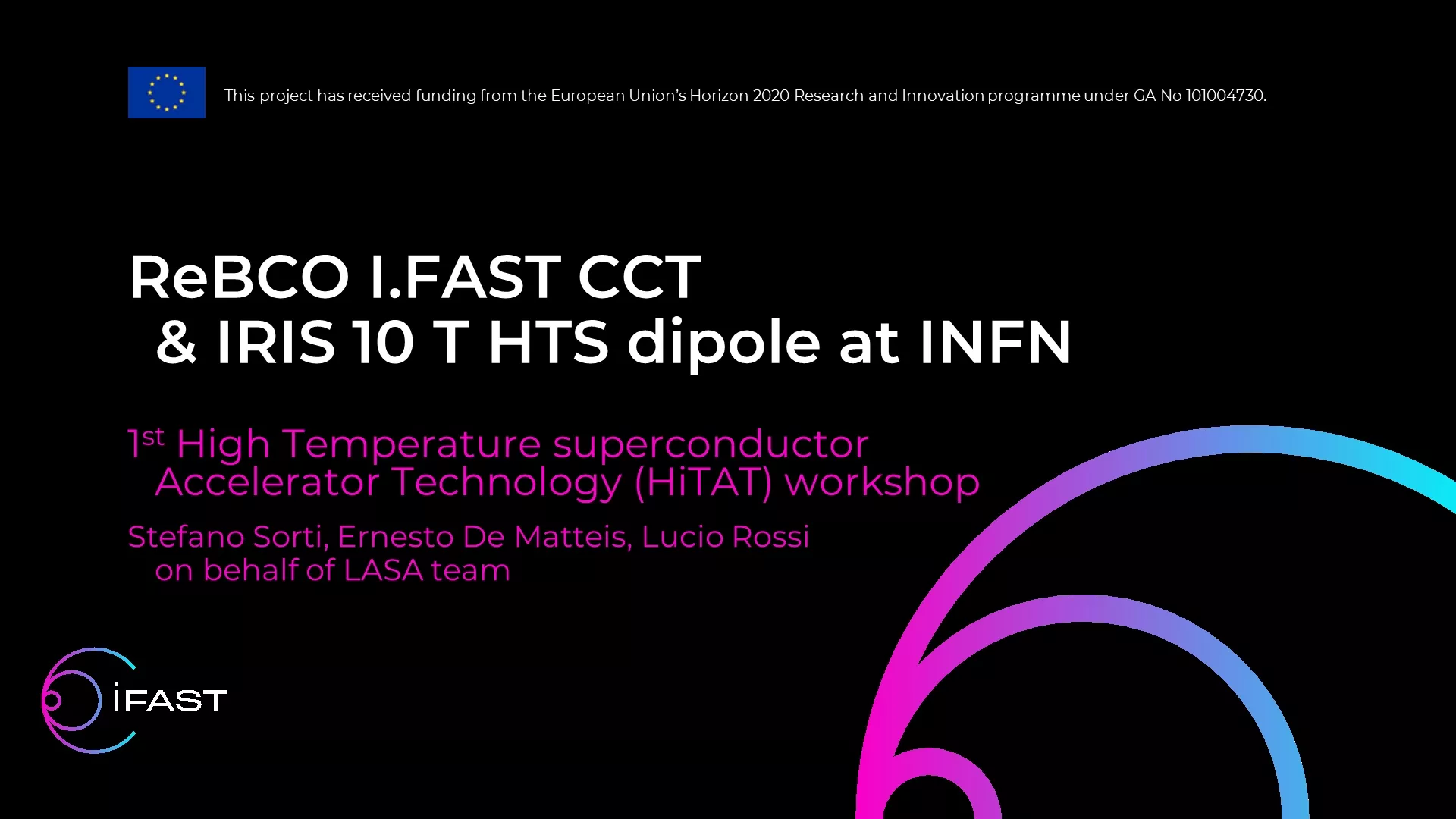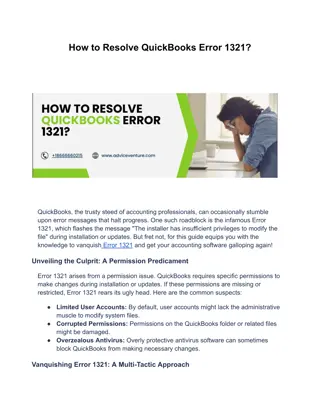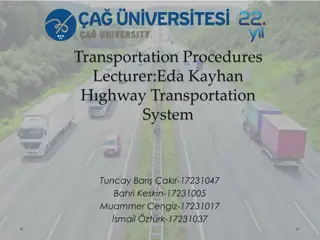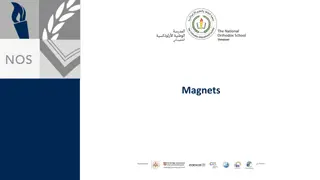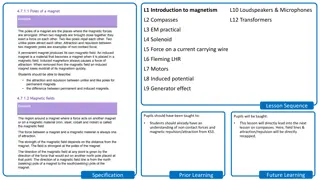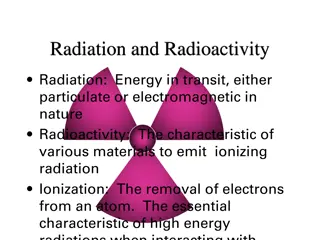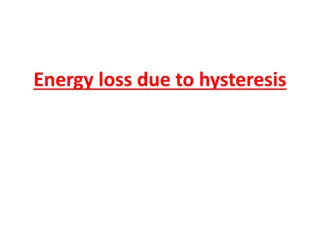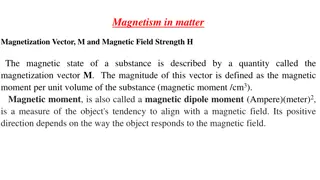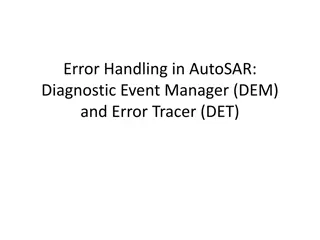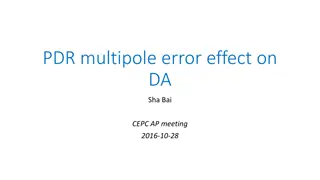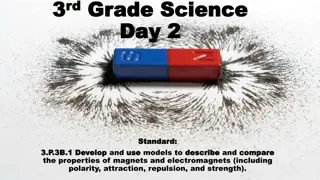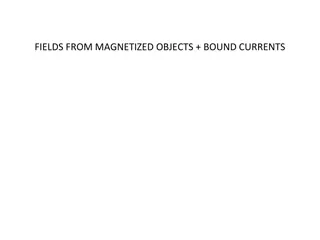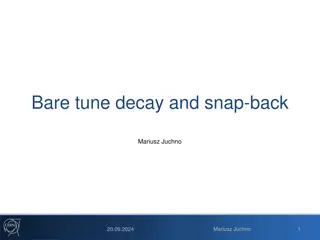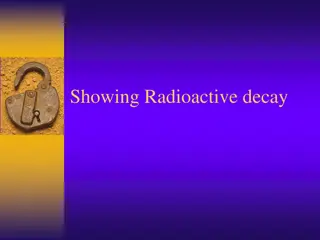Magnetization, Decay, and Error Fields in HTS Accelerator Magnets
The research conducted at The Ohio State University focuses on understanding the magnetization, decay, and influence of error fields in high-temperature superconducting (HTS) accelerator magnets. The study explores the impact of different superconducting materials such as Nb3Sn, YBCO, and Bi:2212 on error fields, with a particular emphasis on addressing issues related to field errors, drift, and magnet quality criteria. The work involves analyzing magnet characteristics, field errors during accelerator operation phases, and error contributions from various HTS stackings. The ultimate goal is to develop tools for predicting error components and improving magnet design to minimize error fields in future collider applications.
Download Presentation

Please find below an Image/Link to download the presentation.
The content on the website is provided AS IS for your information and personal use only. It may not be sold, licensed, or shared on other websites without obtaining consent from the author. Download presentation by click this link. If you encounter any issues during the download, it is possible that the publisher has removed the file from their server.
E N D
Presentation Transcript
Magnetization, Decay, and Influence on Error Fields in HTS accelerator magnets -- Center for Superconducting & Magnetic Materials (CSMM), The Ohio State University, Columbus, OH, USA M. D. Sumption, C. Myers, M. Majoros, E. W. Collings We thank Advanced Conductor Technologies and University of Colorado, Department of Physics, Boulder, CO, USA D. van der Laan We thank OST for Nb3Sn and Bi:2212 W. Goldacker This work was funded by the U.S. Dept. of Energy, Division of High Energy Physics, under Grant No. under Grants No. DE- SC0010312 & DE-SC0011721 (University Program) (OSU) Department of Materials Science and Engineering
Motivation error fields and drift While near-term (luminosity) LHC upgrades will require only NbTi and/or Nb3Sn, the subsequent energy upgrades of the LHC are expected to require HTS/LTS hybrids In addition, a high energy future circular collider may require YBCO or Bi:2212 (and Nb3Sn) The fact that strand and cable magnetization lead to field errors is well known, tools for predicting likely error components in a more global way is needed. This includes YBCO, Bi:2212, and ongoing Nb3Sn assessment Below we will start with NbTi dipole magnet characteristics, and explore the relative magnetic properties of Nb3Sn, YBCO, and Bi:2212 To key collider issues will be, what is the size of b3 (the sextupole error field), and what might the use of HTS do to drift in b3 Department of Materials Science and Engineering
Field Errors at collision and injection In accelerator operation, there is (1) a low field injection phase, where the dipole magnets operate for some 20 minutes or more at a nominal 1 T injection porch (2) An energy ramp, coast (beam collision) (3) An energy dump, where the magnets are then cycled back to near zero, followed by a rise to the beam injection field to repeat the cycle Superconducting Accelerator Magnets by P Ferracin, ETodesco, S O. Prestemon and H Felice, January 2012 Any strand magnetization leads to deviations from the pure dipole field which tend to defocus the beam. The above process leads to a partial compensation of the error fields at injection, a (hopefully small) negative value usually dominated by the sextupole component, b3. Such errors are described in terms of the high order multipoles of the field, a good measure is the sextupole component, b3 Department of Materials Science and Engineering
Magnetization Error Criteria Different stackings of HTS can change error contributions The magnet designers criteria for magnet quality is terms of the multipole error fields, a good error to key in on for dipoles in the sextupole component, b3. b3 should be about 1 unit or less 1 unit is 0.01% of the main field The correlation between strand magnetization and error fields is magnet design dependent cos theta dipoles and block magnets of different designs magnet cross section will have different magnetization to error field correlations Amemiya, IEEE TRANSACTIONS ON APPLIED SUPERCONDUCTIVITY, VOL. 20, NO. 3, JUNE 2010 Department of Materials Science and Engineering
NbTi Mag as a compare to IEEE Trans. 9 1999 Superconducting Accelerator Magnets by P Ferracin, ETodesco, S O. Prestemon and H Felice, January 2012 Measurement in MBP2O1 - Aperture 1 30 20 b3 (units @ 17 mm) 10 0.5 T, 15 mT => 12000 A/m 0 From df and Jc, at 0.54, the values Mcoup,LHC= 2.64 kA/m and Msh,inj,LHC= 10.3 kA/m, may be regarded as bench-marks against which the corresponding properties of Nb3Sn cables can be compared. -10 injection -20 b3 is about 3, and M about 10 kA/m but this will depend on magnet design. Is there a way to separate or partially separate magnet design and strand -30 0 500 1000 1500 current (A) Department of Materials Science and Engineering influence?
Simple Model of b3 ratio estimation---Partial separation of strand and magnet variables Any given dipole magnet will have a set of multipoles that depend on conductor magnetization in a design-specific way. This is in particular true for b3, thus ?3?= ??? ,??? Here and below, the error field b3 is given in units, and , are for a specific injection field Here Msh,i is the magnetization of the ith part of the winding, located at position x,y,z, Vi is the volume of a small region surrounding this point, b3,iis the contribution of this region to the total b3, and i is the coupling between these two. Then, ? ? b3= ?=1 Where and Msh are now continuous that depend on position within the winding. This can then be written?3 = ?? (?) ? ?,?,? ?3= ?? (0)? ??? ? = ? ?,?,? For LHC = 3 x 10-4 units*m/A ?3,?= ?=1 ?M? ,???= ? ?,?,? ?? ?,?,? ?????? ?? ?,?,? ?? 0 ?? ?,?,? ?? 0 where ?????? ?????? Department of Materials Science and Engineering
Angular Anisotropy, field dependence, history Msh(0) is the magnetization at injection, a field alignment for maximum magnetization, and standard field history . Then Msh(B)=Msh(0)(Jc(B)/Jc(0)) (x,y,z) (x,y,z) = Msh(0) (B{x,y,z}, {x,y,z}) ( {x,y,z}) (x,y,z,Bp{ }) here =Jc(B)/Jc(0), represents the orientation of the local segment of conductor with respect to a reference orientation (0< <1) characterizes the fraction of the magnetization at a given angle relative to the position of maximum magnetization (purely geometric), and (-1< <1) represents the influence of field history on Msh, being = 1 for field sweep protocols where B is swept to B0 -2Bp or greater before being brought up to B0, then ? = ? ?,?,? ? ? ?,?,? ? ?,?,? ( ?,?,? ) (?,?,?,??? ) ?????? Department of Materials Science and Engineering
Weighted We can also define ? 1 ???? ? ?,?,? ? ? ?,?,? ,? ?,?,? ( ?,?,? ) (?,?,?,??? )?? where = ?3= ?? 0 ? = ?? 0 ????? = ?? 0 ? , and also ? = ? ???? is a constant (with units units*m/A) connecting b3 to a reference magnetization < > is a related constant (units- units* A-1m-2) connecting b3 to a reference moment We will not attempt to calculate or < > in detail, nevertheless, the former will have some utility for estimating b3 from strand magnetizations, the latter is computational useful, as we will see below. Department of Materials Science and Engineering
Equal Volume Replacement Let us consider LHC-type dipoles in which the NbTi cable is replaced by equal volumes of Nb3Sn, Bi:2212, and YBCO-wound cables, then ?3=? ? Where again (0) ?? ?? (0) ?3 ? = ? ?,?,? ? ? ?,?,? ? ?,?,? ( ?,?,? ) (?,?,?,??? ) ?????? Let the replacement conductor is isotropic (true for NbTi, Nb3Sn, and Bi:2212 conductors, CORC, and TSTC. In this case the dependencies drop out, and =1. Let us, for the sake of a direct comparison, set (x,y,z) = (x,y,z), i.e., we assume the same magnet ramp sequence will be used for the two magnets. Department of Materials Science and Engineering
Equal Volume Replacement II (0) (0) =? ? ?,?,? ? ? ?,?,? ?? ?3 ?3 ?? ?? (0)=?? Then ? ? ?,?,? ? ? ?,?,? ?? ?? (0) The integral terms are then essentially the field dependence of Jc-weighted integrals of . If we choose a linear field dependence for (referenced to B0), then =1+b[(B0-B)/B0], then (? ?) ? (?0 ?) ?? (0) (0) =? ?3 ?3 ?? ?? (0)=?? ?0 1 + ? ??? ?? (0) Where the second term is just the different in the linear coefficient in the Jc dependence of the two conductors multiplied by a factor which weights their contributions over the magnet. This term will be small (< 1) and positive; if it is << 1, then we find the simple approximation that b3 /b3 Msh (0)/Msh(0). Department of Materials Science and Engineering
Magnetization and field error for Equal volume replacement NbTi(1) Rutherford Rutherford Rutherford TSTC Roebel CORC 0.88 0.855 0.87(4) 0.385 0.455 0.26 20.4 - 1.75 7.85 - 0.455 7 61 278 10.3 23.4 10.7 198 15-37 169 13-32 3 50 4-10 Nb3Sn(2) Bi:2212(3) Strand type Cable type Cable packing factor, c Strand filling factor, s Layer CCD, Jc, kA/mm2 Eng. CCD(7), Je, kA/mm2 Fil. (strand) size, ds, m Msh,inj,cable (calc.)(11), kA/m Msh,inj,strand (meas.) , kA/m Msh,inj,cable (meas.)(12), kA/m 9.4 b3, units YBCO YBCO YBCO 0.56 0.01(5) 88(6) 0.88 4000(8) 2000(9) 4000(10) 418 298 - - 612 383 184 115 0.80 0.01(5) 88(6) 0.88 0.58 0.01(5) 88(6) 0.88 433 - 346 104 Department of Materials Science and Engineering
Target Field Replacement Under the equal volume replacement, a lower Jc strand lead to a lower magnetization but also a lower bore field Now, however, let us imagine a scenario where we want to replace a magnet made from NbTi strand with one made from a different stand type but the target field is equal to or higher than the NbTi magnet, then ?? 0 ? ???? ??? 0 ? ???? ?3 ?3= ?3= ?? 0 ? ????, and 1 ???? ? ?,?,? ? ? ?,?,? ,? ?,?,? ( ?,?,? ) (?,?,?,??? )?? ? = Department of Materials Science and Engineering
Target Field Result An isotropic Jc with a linear B dependence leads to ? (?,?,?)?? ?? 0 ? ???? ?? 0 ? ???? ?? 0 ???? ?? 0 ???? ?3 ?3= = ?(?,?,?)?? ?0 ? ?0 ? ? (?,?,?) ?? An isotropic Jc with an exponential B dependence leads to + ?0 ? ?0 ?(?,?,?)??+? ?(?,?,?) ?3 ?3 ?? 0 ???? ?? ?0 ? ? ?0 ? ? ? (?,?,?)??? ?? =?? 0 ???? ?(?,?,?)??? ?? If we make no simplifying assumptions ? (?,?,?)? ? ?,?,? ,? ?,?,? ( ?,?,? ) (?,?,?,??? )?? ?(?,?,?)? ? ?,?,? ,? ?,?,? ( ?,?,? ) (?,?,?,??? )?? =?? 0 ???? ?? 0 ???? ?3 ?3 =?? 0 ???? ?? 0 ???? ?3 ?3 ? Or Department of Materials Science and Engineering
Result for field target However, Vmag = LmagAmag where Lmag is the length of the magnet and Amag is the cross-sectional area of the magnet, giving us, upon substitution (assuming that magnet length remains constant), ?? ??0 ???????????? ???? ???? =?? 0 ?? ?3 ?3 ? The magnet load line is given by Bbore = CImag and Bbore = C Imag , where C and C are magnet constants, and Imag is the current in the whole of the magnet cross section, such that Imag = N*Istrand, and N is the number of strands in the magnet cross section. The C is (1/N) times the magnet constant as defined with respect to Istrand. Then Imag = Amag*Jmag. Then ?????,????/? ???,????,???? ??????? ????? ????= ?? 0 ?? ?? ???? ?????,???? ??0 ?????????????,????? ? ??,????,???? ? ????,????,???? ?3 ?3= Which leads to Department of Materials Science and Engineering
Magnetization and field error Target Field Replacement NbTi(1) Rutherford Rutherford Rutherford TSTC Roebel CORC 0.88 0.855 0.87(4) 0.385 0.455 0.26 20.4 - 1.75 - 0.455 7 61 278 6.91 13.0 0.396 0.704 0.855 0.348 8 15 20 3 76 34 Nb3Sn(2) Bi:2212(3) Strand type Cable type Cable packing factor, c Strand filling factor, s Layer CCD, Jcinj, kA/mm2 Eng. CCD(7), Jeinj, kA/mm2 7.85 Fil. (strand) size, ds, m Jcable,inj kA/mm2 Jcable,Coll, kA/mm2 Bcoll, T b3, units YBCO YBCO YBCO 0.56 0.01(5) 88(6) 0.88 4000(8) 2000(9) 4000(10) 0.493 0.704 0.244 0.320 20 20 960 480 0.80 0.01(5) 88(6) 0.88 0.58 0.01(5) 88(6) 0.88 0.510 0.232 20 960 With C /C = 1 and =1 Department of Materials Science and Engineering
Some Clarifications HTSC magnets are presumably to be hybrids, using, say Nb3Sn to reach 15 T, and HTS to get to 20T. Also YBCO will be used in some mixed field orientation The final effective average contribution could be a 75%/25% mix pushing YBCO/Nb3Sn hybrids to significantly lower mag However, the HTS will be presumably closer to the beam. One final Note: While striating the YBCO will not influence Roebel cable Magnetization, it will reduce CORC and TSTC cable magnetization. From the above considerations, it seems that the striation target should be 100 filaments in a 4 mm wide strand Department of Materials Science and Engineering
Drift on the injection Porch Just as important as the absolute value of b3 is any change with time during the injection porch It is possible to compensate for error fields with corrector coils, but the presence of drift makes this much more difficult At right is shown the drift of the error fields as a function of time from zero to 1000 seconds for LHC magnets, followed by a snap-back once the energy ramp begins The underlying mechanism for drift in NbTi magnets is the decay of coupling currents, (especially inhomogeneous and long length scale coupling currents) and their influence on the strand magnetization Need to keep both b3 and its drift below 1 unit For NbTi and Nb3Sn based magnets, this is possible Department of Materials Science and Engineering
Important to control drift So, right now we are at several units of drift Drift in LTS is due to influence of long range coupling current decay on strand magnetization But HTS materials famously exhibit Giant Flux Creep (Y. Yeshurun and A. P. Malozemoff) But, Creep goes like kT, so its not a problem at Low Temperatures, right? No at right is data of PRB paper at 4 K Even though creep reduced, still significant Especially for precision field Department of Materials Science and Engineering
Magnetization Creep and b3 Sample Bi:2212 1 T YBCO B, T orientation -M0, kA/m -M20min, kA/m M20min/M0 15 12 2.7 1.5 991 906 45 933 811 280 187 45 229 200 M, kA/m %b3 3.0 1.1 90 120 93 29 0.80 0.58 0.91 0.86 0.67 0.87 20 42 10 14 33 13 12 T 1 T 1 T 12 T 12 T If we use the Bi:2212 projection of b3 = 35 units, then a 20% change is 7 units If we use the YBCO projection of b3 = 500-1000 units, then a 15% change is 75-150 units. Downrated for insert, 20-40 units Department of Materials Science and Engineering
Summary and Conclusions Projected Accelerator injection Magnetization contributions for YBCO, Bi:2212, and Nb3Sn have been compared against NbTi directly Deffis not the whole story A simple method for correcting for conductor Jc (at collision and injection), and the magnet target field leads to a more useful metric, assuming magnet design remains constant . Bi:2212 strands will cause lower magnetization errors than expected on a deff basis alone, because of the flatness of Jc vs B. YBCO contributions are highly dependent on the amount of field perpendicular to the tape, but a striation target was suggested : 100 filaments/4 mm width Potential contributions to drift on the injection porch from creep (as opposed to the standard LTS mechanism) in Bi:2212 and YBCO were considered 10-20% changes in magnetization over a 20 minute time window were seen at 4K, for an 18 stack Bi:2212 with OK deffand moderate magnetization, this leads to 1 unit or so maybe OK For YBCO, tending to have higher Magnetization, 30-40 units was seen, would be diluted by hybrid implementation or parallel field orientation The above striation target, implemented in CORC cable, would make drift also OK for YBCO Department of Materials Science and Engineering
A. Xu, J. J. Jaroszynski, F. Kametani, Z. Chen, D. C. Larbalestier, Y. L. Viouchkov, Y. Chen, Y. Xie and V. Selvamanickam SUST, vol. 23, p. 014003, 2010 Jc (B) curves of YBCO CCs Dropping from 77 K SF to 4.2 K SF increases Jcby x 10. Increasing from SF to 20 T decreases by about 10 Increasing from SF to 1 T, about 2 times less So, we expect Minj 500 kA/m M20 T 100 kA/m This is expected for any field orientation, since cable is cylindrically symmetric Department of Materials Science and Engineering
